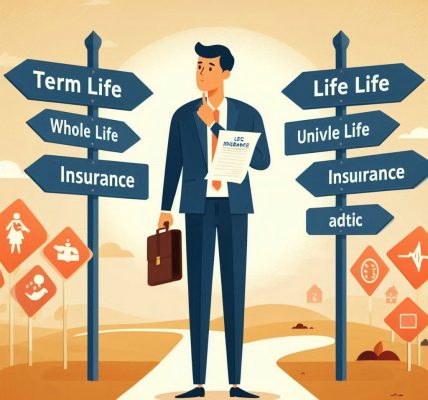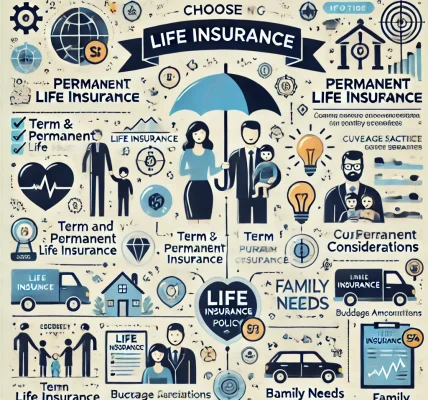Introduction
Life insurance is a crucial financial tool that provides security for your loved ones in case of an untimely event. However, many people delay purchasing life insurance, only to realize later that premiums have increased significantly. Understanding why life insurance premiums rise with age and how to lock in low rates early can help you save money and secure the best coverage for your needs.
In this DIY guide, we’ll explore:
- Why life insurance costs increase as you age
- The impact of health conditions on premiums
- Strategies to lock in low rates
- The best age to buy life insurance
- Tips to save on your life insurance policy
1. Why Do Life Insurance Premiums Increase with Age?
1.1 Increased Mortality Risk
Life insurance premiums are primarily based on risk assessment. As you age, the likelihood of developing health conditions or passing away increases. Insurance companies factor in this increased risk when determining your premium rates.
1.2 Declining Health and Medical Conditions
As people age, they are more likely to develop chronic illnesses such as:
- High blood pressure
- Diabetes
- Heart disease
- Cancer
These conditions make insurance companies more cautious, leading to higher premiums or even denial of coverage.
1.3 Shorter Policy Terms for Older Individuals
Younger individuals who purchase life insurance can secure longer-term policies (e.g., 20 or 30 years) at lower rates. In contrast, older applicants might only qualify for shorter terms (10- or 15-year policies), which are priced higher.
1.4 Increased Cost of Underwriting
Insurance companies conduct medical exams, lifestyle assessments, and risk evaluations before issuing a policy. Older applicants typically require more comprehensive underwriting, leading to higher administrative costs, which are passed on as higher premiums.
2. The Best Age to Buy Life Insurance
2.1 Buying in Your 20s and 30s: The Best Time
Purchasing life insurance in your 20s or early 30s means: ✔ Lower premiums due to lower risk ✔ Better chances of getting coverage without medical exams ✔ More policy options, including term and whole life
2.2 Buying in Your 40s and 50s: Moderate Rates
While premiums are higher than in your 20s, they are still manageable. It’s advisable to lock in a policy now before rates climb even higher.
2.3 Buying in Your 60s and Beyond: Costly but Necessary
At this stage, term life insurance can be very expensive, and many individuals opt for final expense insurance (a smaller policy to cover funeral and end-of-life expenses). Some whole life policies may still be available, but the premiums will be significantly higher.
3. How to Lock in Low Life Insurance Rates
3.1 Purchase Life Insurance Early
The sooner you buy, the lower your premiums will be. Even if you think you don’t need life insurance now, securing a policy early can save you thousands over time.
3.2 Choose Term Life Insurance for Affordability
If you’re looking for an affordable way to lock in a low rate, term life insurance is an excellent option. Choose a long-term policy (20-30 years) to maintain a low rate for an extended period.
3.3 Maintain a Healthy Lifestyle
Life insurance companies assess your BMI, cholesterol, blood pressure, and overall health when determining premiums. To qualify for the best rates: ✔ Exercise regularly and maintain a healthy weight ✔ Avoid smoking and excessive alcohol consumption ✔ Keep up with routine health check-ups
3.4 Avoid Risky Hobbies and Occupations
Some hobbies and jobs can increase your risk profile, leading to higher premiums. Avoid or minimize activities like:
- Skydiving, scuba diving, or extreme sports
- High-risk professions (e.g., firefighters, pilots, miners)
- Frequent international travel to hazardous regions
3.5 Consider Convertible Term Policies
If you’re unsure about committing to a whole life policy, consider a convertible term life insurance policy. This allows you to start with an affordable term plan and switch to a permanent policy later without undergoing a new medical exam.
3.6 Compare Quotes from Multiple Insurers
Insurance rates can vary between companies. Use online comparison tools or consult with an independent agent to find the best rates available.
3.7 Pay Annually Instead of Monthly
Many insurance companies offer discounts if you pay your premiums annually instead of monthly. This can save you 5-10% per year.
4. How Much Life Insurance Coverage Do You Need?
To determine the right coverage amount, consider:
- Your income replacement needs (multiply your annual salary by 10-15x)
- Outstanding debts (mortgage, loans, credit cards)
- Education expenses for children
- Funeral costs and estate planning
Use an online life insurance calculator to find the best coverage for your situation.
5. Common Myths About Life Insurance and Age
❌ Myth 1: “I Don’t Need Life Insurance Until I’m Older”
✔ Truth: Life insurance is cheaper and easier to obtain when you’re younger and healthier.
❌ Myth 2: “If I Miss My Chance in My 20s, I Can’t Get a Good Rate Later”
✔ Truth: While younger buyers get the best rates, you can still find affordable policies in your 30s and 40s by shopping around.
❌ Myth 3: “Life Insurance Is Only for People with Dependents”
✔ Truth: Even if you don’t have children or dependents, a policy can cover funeral expenses, debts, and provide long-term financial security.
6. FAQs About Life Insurance and Age-Based Premiums
Q1: Can I Get Life Insurance After 60?
Yes, but options may be limited, and premiums will be higher. Consider final expense insurance or a guaranteed-issue policy.
Q2: Can I Lower My Life Insurance Premiums If I Improve My Health?
Yes! Some insurers allow policyholders to request a reevaluation after making significant health improvements.
Q3: Does Term Life Insurance Lock in My Rate?
Yes, term policies lock in your premium for the entire duration of the term (10, 20, or 30 years).
Q4: Can I Convert My Term Life Insurance to Whole Life Later?
Many insurers offer convertible term policies, allowing you to switch without a new medical exam.
Conclusion: The Best Time to Buy Is Now!
Life insurance premiums increase with age, making early purchase the smartest financial move. Whether you’re in your 20s, 40s, or even 60s, locking in a low rate today can save you thousands in the long run.
Final Action Steps:
✅ Get a life insurance quote today
✅ Choose a long-term policy to lock in lower rates
✅ Maintain a healthy lifestyle to qualify for better premiums
✅ Avoid unnecessary delays—the longer you wait, the more you pay!




